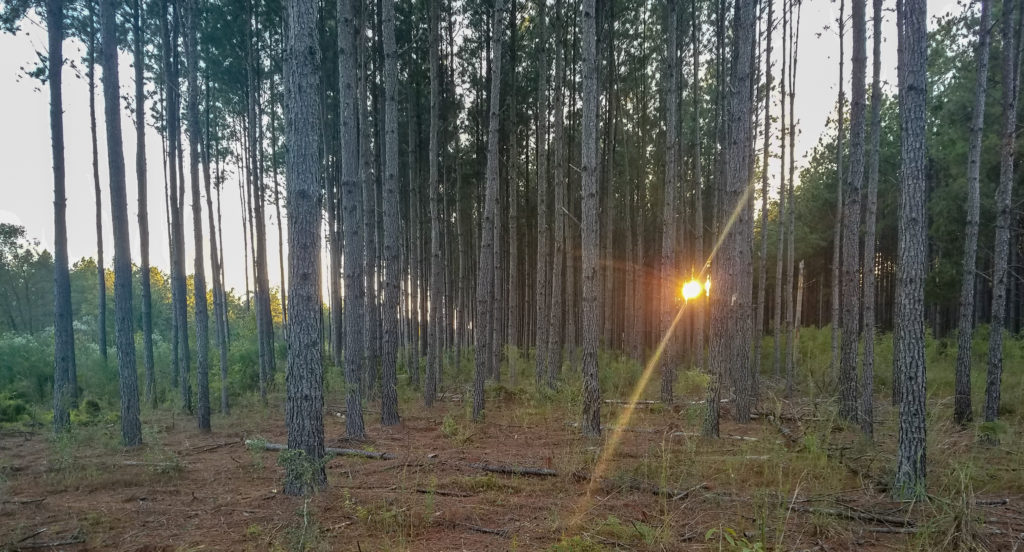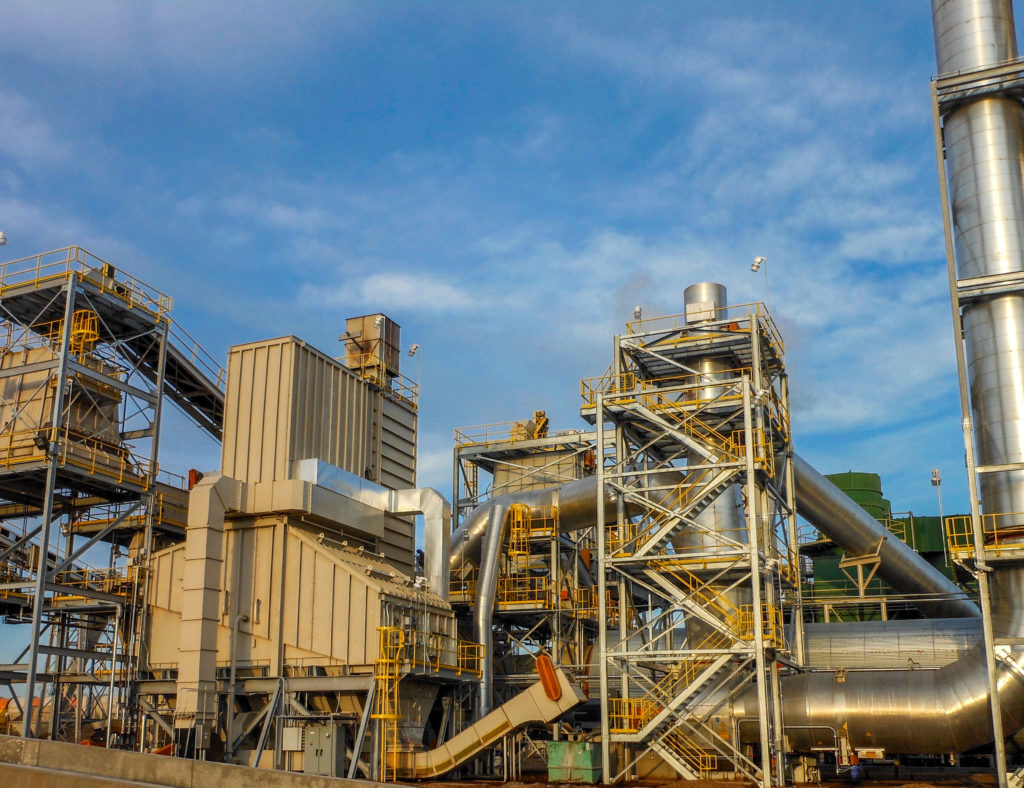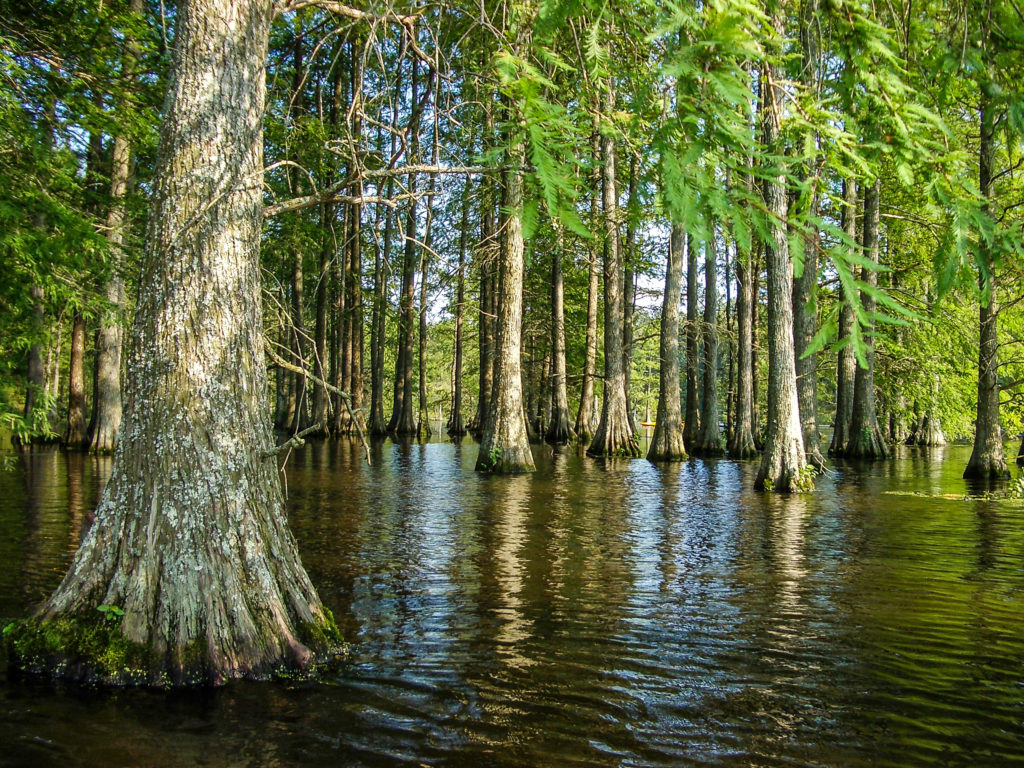
Worse than coal. Exploits a carbon loophole. Creates a carbon deficit.
No, we are not talking about drilling for oil in the Arctic National Wildlife Refuge. Rather, these are a few of the complaints critics level against burning wood pellets in place of coal to reduce Europe’s carbon footprint.
You might assume that exporting a renewable and sustainable product to help wean Europe off coal-fired electricity would bring accolades from environmentalists on both sides of The Pond. But such is not the case. Wood energy has its share of critics. And the scientific community is at odds.
Why does the export of wood pellets provoke such a polarized response?
The pellet export industry in the United States has boomed in recent years, driven by European Union member states seeking to meet aggressive renewable energy and greenhouse gas reduction targets. The Southeast U.S. exports more than 6 million tons of wood pellets a year, primarily to the United Kingdom, Denmark, Italy and Belgium.
More than 30 plants in the Southeast use low-value wood (mill residues, tops and limbs, thinnings, and crooked or rotten trees) to make wood pellets. Shipped overseas in bulk, European utilities burn the pellets mixed with coal (a practice known as co-firing) to lower carbon emissions from aging coal-fired electric-generating plants.
Replacing coal with wood pellets is part of an EU strategy to reach 20 percent renewable electricity by the year 2020. Renewables now account for 13.2 percent of EU energy production and, of that, almost half (44.7 percent) comes from wood or other solid biomass fuels.
The United Kingdom’s use of wood pellets has pushed it into the top 10 in the global low-carbon electricity rankings. Thanks, in part, to co-firing wood pellets with coal, the UK moved from a 2012 ranking of 20th out of 33 industrialized countries to 7th in 2017.
Co-firing or converting to wood pellets presented a viable solution for coal generators to meet the EU’s strict low-carbon energy policy. Wood pellets are attractive because they can be combusted alongside coal with minimal plant modifications or new capital expenditures.
“Most coal generators face a big question,” said Thomas Meth, executive vice president and co-founder of Enviva. “Am I going to shut down? Am I going to spend hundreds of millions of dollars? Or am I going to kill two birds with one stone and actually fulfill the carbon requirement and prolong the life of assets in a place where building new infrastructure is very difficult?”
But Europe’s emission cuts have created controversy. Critics complain that using wood for energy is not carbon neutral. While emissions from the wood’s combustion are immediate, it takes years for trees to grow back and sequester the carbon released by burning wood. There’s a longstanding carbon debt, critics say.
In addition, some environmental groups, such as The Dogwood Alliance, knock the industry for harvesting trees in ecologically sensitive areas, such as bottomland hardwood forests.

Researchers have long understood the contributions of long-term sustainable forest management to a low-carbon future. In 2007, the Fourth Assessment Report issued by the Intergovernmental Panel on Climate Change stated:
“In the long term, a sustainable forest management strategy aimed at maintaining or increasing forest carbon stocks, while producing an annual sustained yield of timber, fiber or energy from the forest, will generate the largest sustained mitigation benefit.”
But the nuances of carbon accounting divide academia. Scientists largely agree on how trees grow, but differ on the assumptions factored into their models. Different assumptions lead to different outcomes – thus the divide.
“You can have an honest academic discussion [about carbon accounting] because of differing assumptions – the time period, land use changes, the fate of the future forest. And all those are defendable because you don’t know what would happen,” said Robert Abt, an economics professor at North Carolina State University.
The European Union’s policy is based on the idea that using wood is carbon neutral, if the attendant forests are managed sustainably. Some people see this perspective as exploiting a loophole. However, many in the pellet export business and some scientists think the question of carbon neutrality misses the point.
“Nobody in our industry would argue the carbon neutrality versus carbon benefit,” said Meth, at Enviva, the world’s largest pellet producer. “Because wood pellets produce 80 to 85 percent fewer greenhouse gas emissions than coal, it’s hard to argue with that.”
Meth believes a more appropriate question would be: “How does wood energy compare to coal?” That answer is both complex and counter-intuitive.
Critics say wood is “worse than coal” because it is produces less energy per unit. While it’s true that burning wood puts more carbon dioxide in the atmosphere per unit of energy, pellet advocates say the emissions are soaked back up as the forest grows.
But counter-intuitive? In most places, the amount of forest land is static. You cut trees and wait for them to regrow. But in the American South, forest land on the edges is fluid. So when the demand for wood products drives up prices, more trees are planted.
The fate of Southeastern U.S. forests rests with private landowners who own 90 percent of the forests in the region.
A growing body of research shows that using low-value trees for bioenergy drives up the value of forested ground, which leads to increases in forest cover. Call it the price effect – or the classic principles of supply and demand at work.
“It’s the fact that when you’re increasing prices to landowners, that kicks in all the benefits that you need on the carbon side,” Abt said. “When prices go up, forestry becomes more profitable and there’s actually more trees on the landscape because of that extra demand.”
Abt explained that marginal land in the South fluctuates between agriculture and forestry. Landowners seek the use that will yield the best return.
The South has a long history where as demand increases for wood, forest land increases and with it intensive management, said Abt. “It’s been empirically shown in the South that increased demand for trees leads to more trees on the landscape.”
Charlie Becker of the Virginia Division of Forestry has seen firsthand how this dynamic plays out on the ground. As the division’s utilization and marketing forester, he’s been tracking wood-product trends for decades.
“In Virginia and North Carolina, land use is very fluid,” Becker said. “When beef prices go way up, we’ve seen some forest being harvested and converted to pasture land or crop lands. On these marginal lands, they’ll go to agriculture and then go back and do a rotation or so of trees.”
Forest landowners earn money by selling high-quality saw logs. The export pellet market puts a little more money in landowners’ pockets at harvest time. These markets create demand for the low-value hardwoods that once went to pulp and paper mills, but have declined in recent years as paper mills shifted to pine trees. The addition of a small but dependable revenue source can encourage landowners to practice better forestry.
According to Ashley Faircloth, a regional manager with Claybourn Walters Logging Co., a logging and wood procurement business, markets for low-value hardwoods give landowners more resources to reforest their property and encourages replanting with high-value species.
Investing in higher-value hardwood species brings more revenue in the future, which helps ensure that forests remain as forests.
When considering forests and carbon, the key is for forest owners to be aware and react to price signals.
According to Madhu Khanna, a professor of agricultural and consumer economics at the University of Illinois: “If forest owners know that there will be robust demand for wood pellets over the next 25 years, they might not convert land to other uses. Or they’ll maintain their land as forestry and possibly even convert some of their marginal land to trees of bioenergy crops.” (Nov. 20, 2015 phys.org)
The price effect matters in carbon accounting, but so does the model used for comparison. Scientists use models to evaluate the carbon impacts of wood energy; they rely on assumptions to project those impacts into the future.
Some researchers assume if a pellet mill isn’t there, the trees will be left to grow indefinitely, storing carbon for the long term.
Others, including Abt, say that assumption is flawed, as the Southeastern forests were planted as crops – for harvest.
“You have to tell a story about what would have happened to those trees if this [pellet] mill didn’t exist, Abt said. “On a pine plantation, the trees are fast-growing, and you might have to guess what use the pine trees would have gone to if they didn’t go to the pellet mill. But there’s no scenario where those pine trees wouldn’t have been harvested, because they were planted to be harvested.”
To the largest wood pellet producer in the U.S., Enviva, Abt’s scenario adds a much-needed dose of realism to the exercise of carbon accounting.
“As long as you deal within the realistic set of counterfactuals out there, you’re going to be very comfortable that the carbon benefits are real and substantial,” said Meth. “If your counterfactual is that every piece of wood that goes to the pellet mill is going to continue to grow as a whole tree in perpetuity, you may come to a different conclusion. But that’s not a realistic scenario.”

But does the price effect cut both ways? Do higher prices push ecologically sensitive lands to market when they would be better off left intact? Demand for wood pellets can lead to increased forest cover, but can it also lead to the destruction of valuable habitat?
That is the critique leveled by environmental groups concerned with protecting the Southeast’s bottomland hardwood forest, a unique forest type valued for its beauty and biodiversity.
“Intact bottomland hardwood forests are really cool,” said Amanda Mahaffey, Northeast region director for the Forest Stewards Guild. “They’re just beautiful primeval systems when they’re intact. When you lose them, then that’s really different. It’s a different visceral effect than harvesting a pine plantation.”
According to information provided by Enviva, in the first half of 2017 bottomland hardwood forests provided just 3 percent of the company’s supply. The remainder came from pine/hardwood forests (38 percent), southern yellow pine forests (31 percent), mill residuals (sawdust, shavings and chips) 21 percent, 6 percent from upland hardwood forests and less than 1 percent from arboricultural sources (urban tree trimming).
In response to concerns from environmental critics, Enviva partnered with a broad range of stakeholders to convene the Bottomland Hardwood Task Force and charged it with implementing ways to improve its sourcing from bottomland forests.
“I think Enviva was looking to improve their understanding,” said Mahaffey. “How could they be better forest stewards and help to sustain the resource while they are extracting from it? They are in it for good. They’re trying to sustain a renewable resource and lower the overall carbon output.”
For Enviva, the task force shifted the company’s procurement process from macro to micro – enabling managers to make better decisions about where to source raw materials and how to protect sensitive lands.
“As we evolve, we’ve moved from a macro-policy of simply avoiding sensitive lands to a much more micro-controlled process – land by land, tract by tract, GPS coordinate by GPS coordinate strategy to ensure we can actually influence outcomes,” said Meth, the vice president at Enviva. “We go to the micro-level [with the landowners] and sometimes we find areas that are literally along the river. The best outcome is not to harvest those lands and provide compensation to the landowner.”
The U.S. Endowment for Forestry and Communities helped Enviva identify which sensitive bottomlands should be taken out of production via a conservation easement.
“For me personally, when you realize there’s a gap you are obligated to take a leadership position,” Meth said. “We have been heavily scrutinized and we intend to stay in those areas a long time. As leaders in the industry, we needed to bring people together and seek the knowledge that will create better outcomes.”
The company launched the Enviva Forest Conservation Fund in December 2015. During the first two years of the partnership, the fund committed $1 million to seven projects that, when completed, will protect 10,500 acres of sensitive wetland forest and other valuable habitats.
Clearly, forests and wood energy are playing important roles in our low-carbon future.
Drax, the UK’s largest utility, just announced it will convert a fourth coal-fired power plant to co-firing with wood pellets – a move that will prompt even greater demand for low-value wood fiber.
Southeast Asian countries, notably Japan and South Korea, have small but growing wood-to-energy markets which may bring the export pellet industry to the U.S. West Coast.
The questions and complexity around forests, carbon and habitat will undoubtedly persist. Striking the right balance will require a deeper commitment to cooperative efforts and a more refined and practical understanding of carbon accounting.
Marcus Kauffman writes about wood utilization and forestry for the Oregon Department of Forestry. He can be reached at [email protected].
Great article. Too bad the US Northeast has so many anti forestry fanatics that the region can’t benefit from this market, as the Southeast is doing. One of the fanatics, supposedly an environmental engineer, said that burning wood for energy is comparable to Nazi ovens burning people. That just goes to show how crazy they are!
Joe Zorzin
“forester for 45 years”
Nice to see a positive article about the pellet industry for a change. Would like to see the carbon debt argument debunked in a little more detail.
Some powerful lobby groups against the use of wood for renewable energy including oil, natural gas, coal and the engineering firms that serve their needs.
Even some pulp and paper companies lobbied against pellet plants.
Market forces are succeeding in wood pellet utilization.
I’ve been struggling to debunk the carbon debt model since it was announced here in Massachusetts several years ago. The problem is that this state is ground zero for the most fanatic forestry haters on the planet. It’s like trying to argue with religious fundamentalists. But, in essence, the carbon debt model only makes sense if you assume that the carbon accounting must be based on only those acres cut where some wood goes to biomass- rather than tracking carbon flows in the regional forest. The fanatics claim you must track carbon only from the acres just cut. They assume that if no wood is sent to a biomass plant from those acres- that the forest will remain as is- with no cutting and that the forest will continue to sequester ever more carbon forever- which of course is not reality. They also fail to account for the ecosystem benefits of good forestry- while failing to account for the externalities of large scale solar and wind “farms”. I would probably write a full article on these ideas but I’m a bit too busy.
Joe Zorzin
MA Forester License #261
Low cost air emission control systems are available for USA wood pellet plants.